CAMRA Pub Heritage Group update – May

In its regular column CAMRA’s Pub Heritage Group shares news and updates about pubs with historically significant interiors across the country. For further news see the Pub Heritage website here.
Three Star Heritage Pubs
Central, Gateshead, Tyne & Wear
Built in 1854, the Central (above) became a hotel around 1890 and this is the likely date for its star attraction – the Buffet Bar, which is now fully open to the public. The bar has a U-shaped counter with a front of segmental arches and a wonderfully ornate bar-back, as well as many other features from the period. The Central has been upgraded from Two to Three Star status.
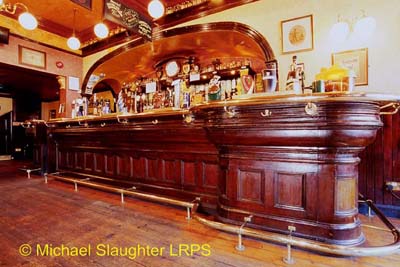
Stags Head, South Shields, Sunderland & South Tyneside (above)
This traditional town-centre pub dates from 1897 and has an unusual floorplan from that period, having both a downstairs and an upstairs bar, due to the narrow footprint of the building. Both have their original Victorian counters and bar backs, and the ground floor public bar has an unusual four-span arch over the servery. The upstairs lounge bar has recently been reopened for public use, resulting in the Stags Head being upgraded to Three Star status. The pub was Grade II listed in 2010 following an application by CAMRA.
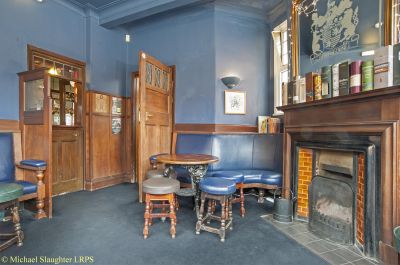
Bath Hotel, Sheffield, South Yorkshire (above)
The Bath Hotel has been awarded Sheffield & District CAMRA’s Sheffield City Centre Pub of the Year title. The pub is an unusually complete example of a Sheffield corner public house with layout and fittings dating from 1931. It was Grade II listed in 1999 following research by CAMRA.

Woodman, Birmingham, West Midlands (above)
The Pub Heritage Group detailed in October that Simon Linford and John Brierley had taken on the lease of the Woodman and were due to reopen the pub by Easter following a minor refurbishment. It has now been reported that Simon and John are currently interviewing for a manager and that the pub’s reopening is now due end of August or early September.
Two Star Heritage Pubs
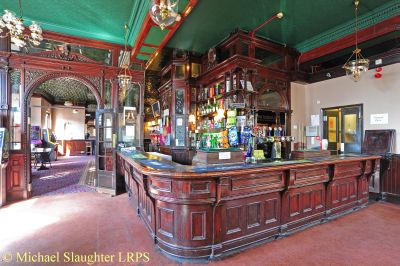
Cauliflower, Ilford, Greater London East (above)
The Cauliflower closed in 2018 following a fire and the Pub Heritage Group reported on the ambitious plans for the pub in the December 2023 bulletin. The pub is due to be auctioned on 18 June through Savills with a guide price of £2,900,000. The Cauliflower is a vast four-storey edifice dating from around 1900, and it is expected that planning permission for a separate building on the car park consisting of 15 flats and further commercial space will also be granted. The pub is being marketed, rather ominously, as “the former Cauliflower public house”. More information about the auction can be found on the Savills website here.
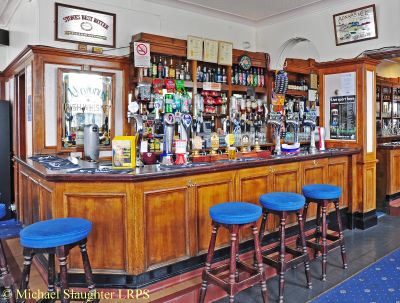
White Hart, Grays, Essex (above)
Closed since May 2023, the White Hart has been on the market through Savills for £575,000 since January and is now shown as being under offer. The pub was rebuilt in the 1930s by Charrington’s and has a fine, long oak bar back from the period.
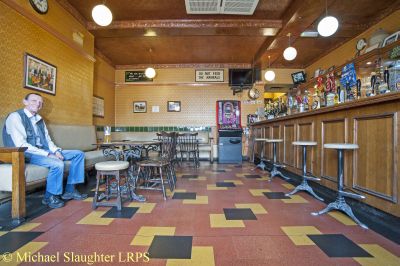
Falcon, Willenhall, West Midlands (above)
The Pub Heritage Group last covered the Falcon in May 2023 following an arson attack which destroyed the interior. Unsurprisingly, approval was granted in January for change of use to a house of multiple occupation.
Ship Inn, Sandgate, Kent
The Pub Heritage Group reported in October 2023 that the pub, which is not statutorily listed, had been purchased by a restaurant company. The distinctive post-war fittings have been removed during its refurbishment, and consequently the pub has been taken off the Inventory.
The following seven pubs have all been upgraded to Two Star status following a reassessment by the Pub Heritage Group.
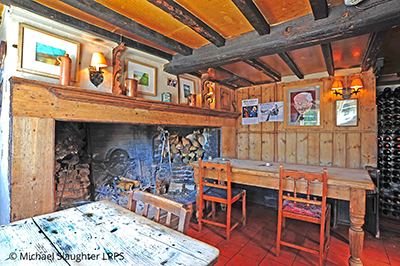
Crooked Billet, Stoke Row, Oxfordshire (above)
The pub has no bar counter, with beer drawn from casks in the cellar, making it one of only eight serving this way left in the UK. The two left-hand rooms retain great historic character.
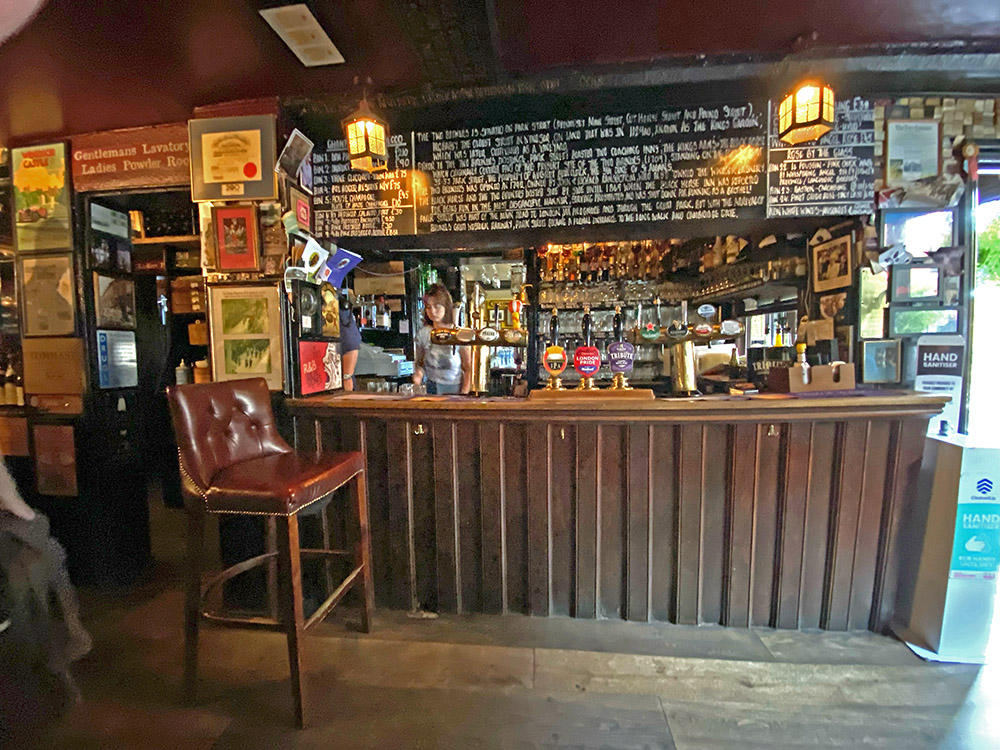
Two Brewers, Windsor, Berkshire (above)
Despite claims to be the oldest pub in Windsor and supposedly dating from the 17th century, it is actually thought to have been built in 1902. The Two Brewers retains a largely intact interior from a refit in the interwar period, consisting of a three-room layout with lobby and off-sales hatch with fittings throughout from the 1930s.
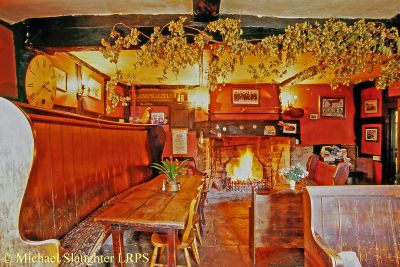
New Inn, Pembridge, Herefordshire (above)
A fine 17th-century, half-timbered building of great character facing onto the market square, the New Inn has a three-room layout and a superb, long settle in the public bar. The bar includes an inglenook fireplace and a set of handpumps on the wall suggesting that there was no bar counter until recent times.
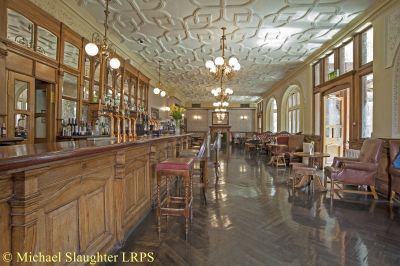
Crown London Hotel, Cricklewood, Greater London North West (above)
A grand Jacobean-style public house built between 1899-1900 by the Canon brewery of Clerkenwell, the Crown has been upgraded to Two-Star status due to the quality of its original features. The lounge in particular has a splendid multi-panelled bar back, old bar counter, carved fireplaces, many bell pushes and ornamented plaster ceiling.
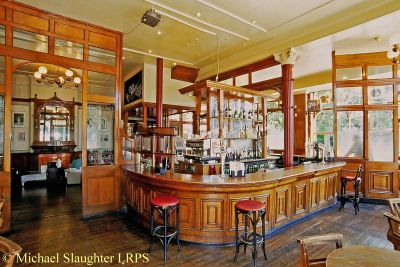
Starting Gate, Wood Green, Greater London North (above)
An impressive two-storey, corner pub which was refitted in 1899. The pub was upgraded to Two-Star status due to the considerable amount of late Victorian fittings that remain, in particular the surviving snob screens and glazed partitions.
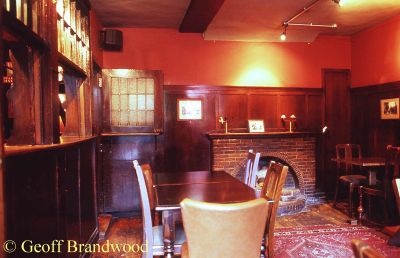
Flask, Highgate, Greater London North (above)
The Flask consists of two buildings, with the three-storey section dating back to the early 18th century. The old servery is an exceptional and highly unusual piece of pub architecture with its glazed sash windows and aged shelving and panelling. The two rooms either side retain much from an interwar refurbishment.
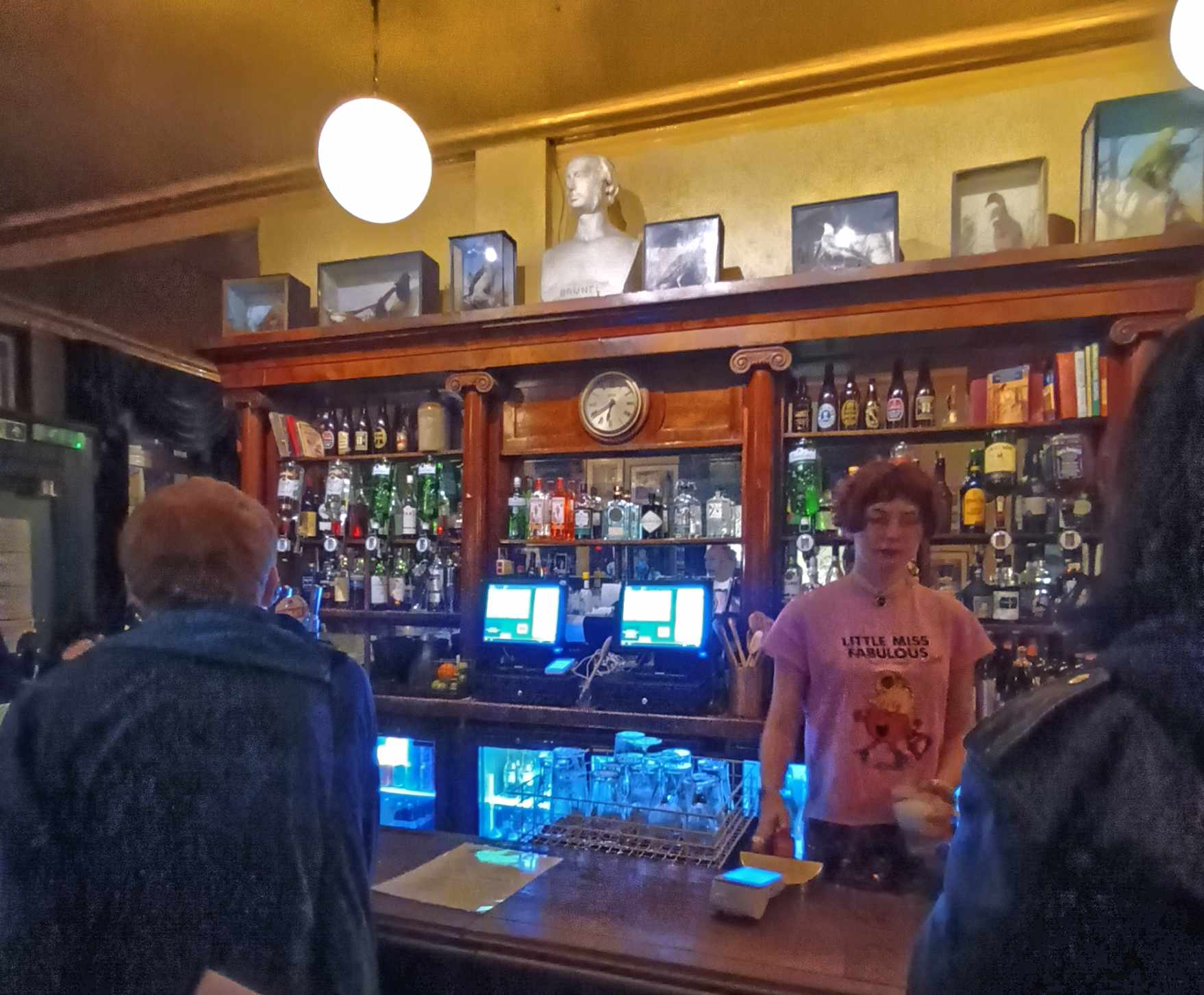
Prince George, Hackney, Greater London East (above)
New to the inventory, the Prince George has been given Two-Star status for its multi-room layout with four surviving rooms. It has an old central counter with panelling and Corinthian columns to the bar back. Features such as wood panelling, fixed seating, an old fireplace and sash windows remain intact. There is also a distinctive porch to the side entrance.
One Star Heritage Pubs
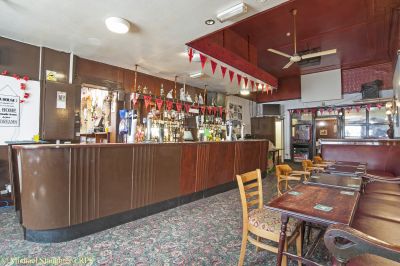
Big Gun Hotel, Sheffield, South Yorkshire (above)
The Pub Heritage Group reported on the closure of the Big Gun in September 2023, with the new owner intending to turn it into a pizza restaurant. Work started in April, including the replacement of doors and windows. Planning enforcement was made aware of this and now a planning application has been submitted stating the site will be used “for sale of food and drink mostly on the premises”. An objection has been lodged by Dave Pickersgill on behalf of Sheffield & District CAMRA. More information about the submitted plans can be found on The Star website here.
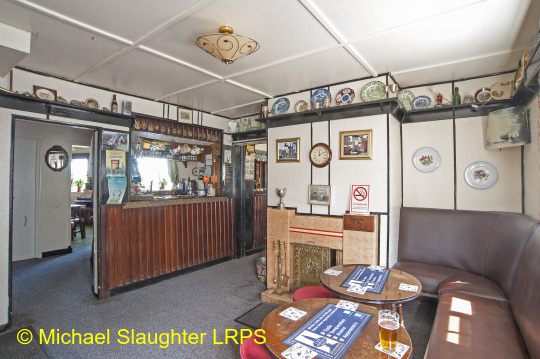
Hare & Hounds, Barlow, Derbyshire (above)
The Hare & Hounds, which retains a multi-room layout and fittings from the 1950s, closed in March 2020 following the death of the owner, Ron Harris, who had run the pub since 1979. It is now up for sale through Nicholsons & Co of Sheffield. More information about the sale can be seen on the Derbyshire Times website here.
Bell, Pensax, Worcestershire
The Pub Heritage Group reported in January on the sale of the Bell, which has been shut since October 2022. The pub reopened on 17 May but, following a refurbishment, most features of historic interest have been removed, and consequently the Bell has been withdrawn from the Inventory.
Black Horse, Cranham, Gloucestershire
The Black Horse is a 17th-century pub which had fittings from a circa 1960 refit. It was purchased by the community and has recently reopened. Sadly, the removal of the historical fittings as part of the pub’s refurbishment has meant it is no longer listed in the Inventory.
The following three pubs have all been upgraded to One Star status following a reassessment by the Pub Heritage Group.
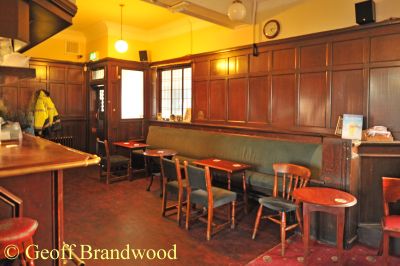
Crown Inn, Liverpool, Merseyside (above)
The Crown was rebuilt in 1935 using designs by Liverpool architects Medcalf & Medcalf. While the main lounge bar was remodelled in the 1970s, much of the panelling and other features remain, although now painted over. The panelled public bar and snug (which has been sensitively restored) remain virtually intact.
.jpg)
Old Eagle, Camden Town, Greater London North West (above)
The Old Eagle is a three-storey Victorian corner-site pub with a variety of fittings. The main feature inside is the L-shaped, panelled bar counter, quite likely dating from Victorian era. Parts of the back bar fitting seem of a similar age, with the most distinctive feature being the green and white coving at the top and its now indistinct relief decoration. There are mosaics in the flooring of the two entrances and an unusual eagle motif in the glass roof.
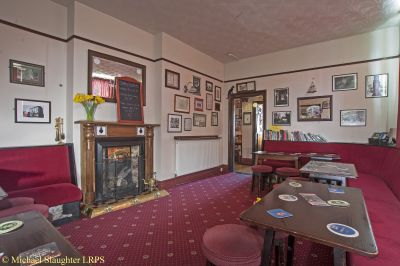
Fat Cat, Sheffield, South Yorkshire (above)
Opened in 1850 and originally called the Kelham Tavern (later the Alma), the Victorian layout of the pub’s three ground floor rooms was altered in 1941 by William Stones brewery, amalgamating the small public bar and smoke room into what is now a larger public bar. With only minor alterations since then, the pub made a different kind of history in the 1980s when, under a new name and visionary new owner, the late Dave Wickett, it found fame as one of the UK’s first real ale free houses.
If you have any news for CAMRA’s Heritage Pubs team, send to: info@pubheritage.camra.org.uk. If you wish to receive the bulletins directly, sign up by sending an email to bulletin@pubheritage.camra.org.uk with the word “subscribe” as the subject or “unsubscribe” if you wish to stop receiving bulletins.
Photos by Michael Slaughter, Geoff Brandwood, Derek Gibson and Michael Schouten

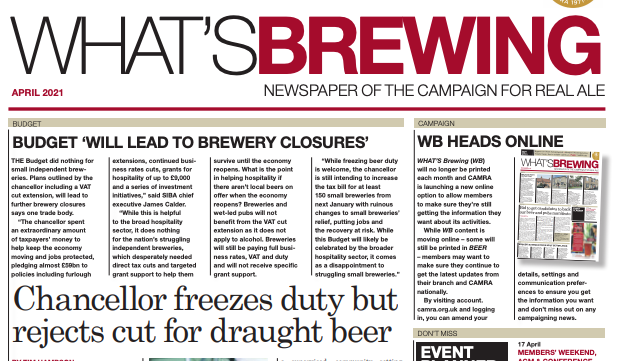 view archive
view archive
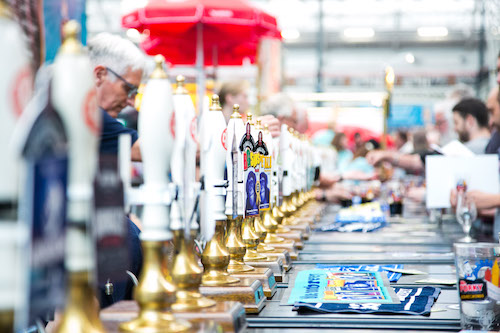 view events
view events